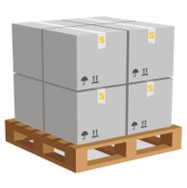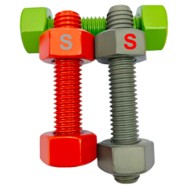
Making sense of clothing measures at times resembles reading a coded message
- Observing your bodily proportions begins correct selection
- Get correct chest, waist and hip stats to pick the right size
- Refer to brand-specific size tables before buying
Say no to trusting number labels alone; they vary widely Better to use personal dimensions to consult the guide. Discovering wardrobe identity is an individual experiment.
Exposing the method behind fit tables
Apparel fit confusion ranks among common shopper complaints worldwide. Understanding fit scales may take detective-like effort, as retailers adopt differing measurement conventions. Armed with guidance and tools you can navigate fit complexities.
- First, learn the different measurement systems brands use. Regularly you will see US, UK, European and Asian benchmarks.
- Next, scrutinise the detailed numbers for bust, waist, hips and length. Align these dimensions with your own measurements.
- Lastly, review the company's fit guidance for special advice. Brand guides typically present recommendations, notes and tips.
Finding your ideal fit when shopping
The landscape of clothing scales may leave buyers puzzled. What one brand calls medium could be small elsewhere. Differences arise because every designer sets bespoke dimensions. So begin by measuring yourself with care. Secure a tailor's tape to measure chest, waist and hip values. Refrain from trusting a single familiar size number. A brand's different garments can vary in how they fit. Finding the right fit takes experimenting with sizes and cuts.

Choosing whether to use default sizes or bespoke fit
When selecting items that occupy space you weigh default versus custom sizing. Each route comes with advantages and trade-offs. Generic sizes supply ready availability and cost benefits. Tailored measurements serve odd shapes or particular use cases best
- Gauge your priorities and budget to guide the decision
- Obtain accurate size figures for room or body before ordering
- Examine different manufacturers and proposals prior to order
Ultimately the suitable measurement varies with your circumstances.
Handling size conversions between countries and brands
Converting across international and brand scales may be challenging. Fortunately, accessible tools help bridge sizing differences. Begin with familiarizing yourself with apparel and footwear standards. Employ conversion guides to compare across size schemes. Keep in mind that your shape and build change the best fit. Also check user feedback and fit comments for real-world clues.
Sizing decoded for everyday shoppers
Handling measurement charts can be taxing for buyers. Companies tend to use their own sizing frameworks, yet this resource aims to simplify the process with clear steps.
- Begin with correct self-measurement using a flexible tape
- Following that, juxtapose your measurements with the size guide
- Take into account build because frame affects style fit
Finally, sampling clothing in person assures the truest fit feedback.
A thorough overview of standard men's and women's sizes
Browsing digitally makes sizing decisions more complicated. Therefore here is a consolidated guide to both male and female sizing. For jeans, tops or dresses these notes aid in determining correct size.
- First off, understand that country and brand cause sizing variance
- Thereafter, collect waist, hip, bust and torso stats carefully
- At last, opt for the larger option if measurements fall in-between
Using this advice will enable confident navigation of size charts. Good luck with your size choices!

A straightforward guide to kids' clothing measurements
Selecting proper kids' clothing sizes can be a struggle. Kids' rapid growth means sizes alter in short order. Look to the brand's chart rather than age as the sole guide. Get the child's chest, waist and height figures for accuracyTaking bust, waist and hip measurements correctly
Finding garments that suit you needs precise body figures. Use a soft measuring tape and a helper for best accuracy. Position yourself upright, shoulders at ease and feet apart
A guide to interpreting XS, S, M, L, XL and XXL
Contemporary size systems can be confusing and inconsistent. Variation between makers reduces the chance of consistent fits. Analyzing the spectrum of sizes helps resolve confusion. Let's explore what the letters and numbers mean in practice!
Celebrating body size inclusivity

Supporting size inclusion combats restrictive ideals. This involves rejecting narratives that demand one ideal shape. Together we can create spaces that foster body comfort and pride.
- Opt for daily practices that reinforce body love Choose body positivity and self-acceptance every day Commit daily to encouraging body acceptance and love Prefer actions Size Chart that cultivate self-acceptance and respect
- Never forget that charm comes in many silhouettes and scales
- Challenge media and messages that endorse restrictive standards
- Decide each day to celebrate body kindness and positive views
